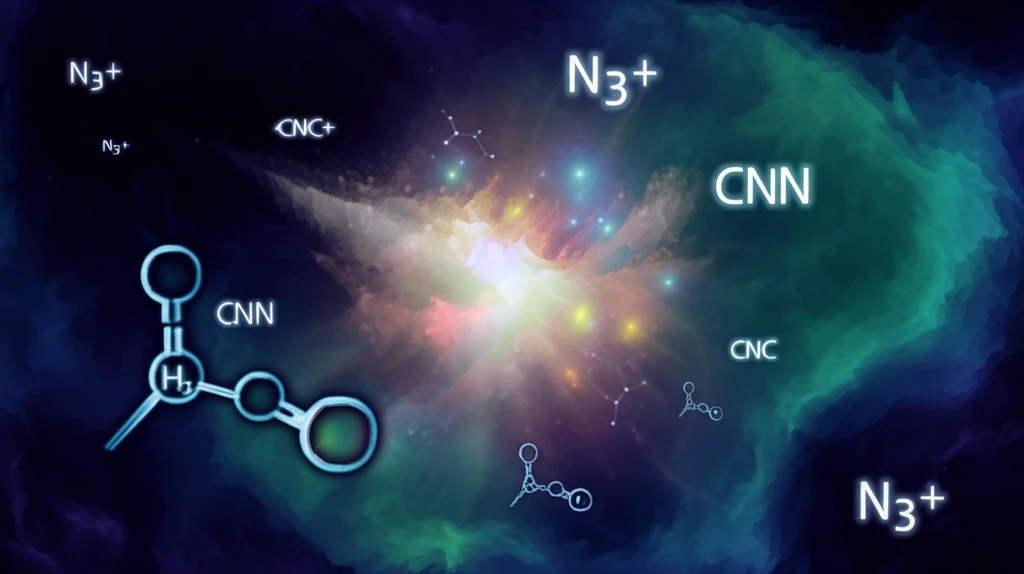
Beyond Benzene: Exploring the Aromatic World of Nitrogen and Carbon Rings
"Unveiling the Secrets of Cyclic Molecules: How research into Cyclopropenylidene cycle, N3+, CNN, HCNN+, and CNC- expands our understanding of aromaticity and its potential in astrophysics and environmental science."
Aromaticity, a concept often introduced through the example of benzene in organic chemistry, extends far beyond carbon-based compounds. This special stabilization plays a pivotal role in various chemical systems. Cyclopropenylidene (c-C3H2) stands out as the simplest π-aromatic hydrocarbon. However, the question arises: can similar isoelectronic cyclic molecules, such as c-N3+, c-CNN, HCNN+, and c-CNC-, also exhibit aromatic characteristics?
These molecules spark interest as potential observational targets for Titan, Saturn’s largest moon. Precise data on their rotational constants and vibrational frequencies is invaluable for remote sensing via telescopes. While none of these aromatic species are strong vibrational absorbers or emitters, the two ions, HCNN+ and c-CNC-, possess significant dipole moments, making them excellent candidates for rotational spectroscopic observation.
A new study delves into the unique vibrational properties of these molecules, revealing trends in their vibrational behavior across corresponding fundamental modes. Notably, HCNN+ and c-C3H2 exhibit nearly identical heavy atom, symmetric stretching frequencies around 1600 cm-1. However, the c-N3+ cation proves relatively unstable, with minimal intensity in its v2 fundamental. This instability poses challenges for its experimental characterization.
Why the Aromatic Chemistry of Nitrogen and Carbon Matters

The electronic similarities between methenylidyne (CH) groups and nitrogen atoms offer a straightforward path to creating molecules stabilized by Hückel’s rules, expanding aromaticity in environmental science and astrochemistry. Research includes nitrogenated polycyclic aromatic hydrocarbons (PAHs), exploring aromaticity in environmental science and astrochemistry.
- Expanding Aromatic Systems: Replacing nitrogen atoms with CH groups in boron nitride fullerenes can stabilize the cage structure.
- Changing Molecular Properties: Nitrogen presence alters molecular properties, including the aromaticity.
- PAH Formation: c-C3H2 plays a key role in forming larger PAHs.
The Future of Aromatic Research
By focusing on small molecules and using detailed rovibrational quantum chemical methods, scientists are revealing how electronic structure affects the vibrational and rotational characteristics of isoelectronic systems. These insights pave the way for detecting these molecules, especially in places like Titan, and deepen our understanding of aromaticity’s far-reaching impacts.
